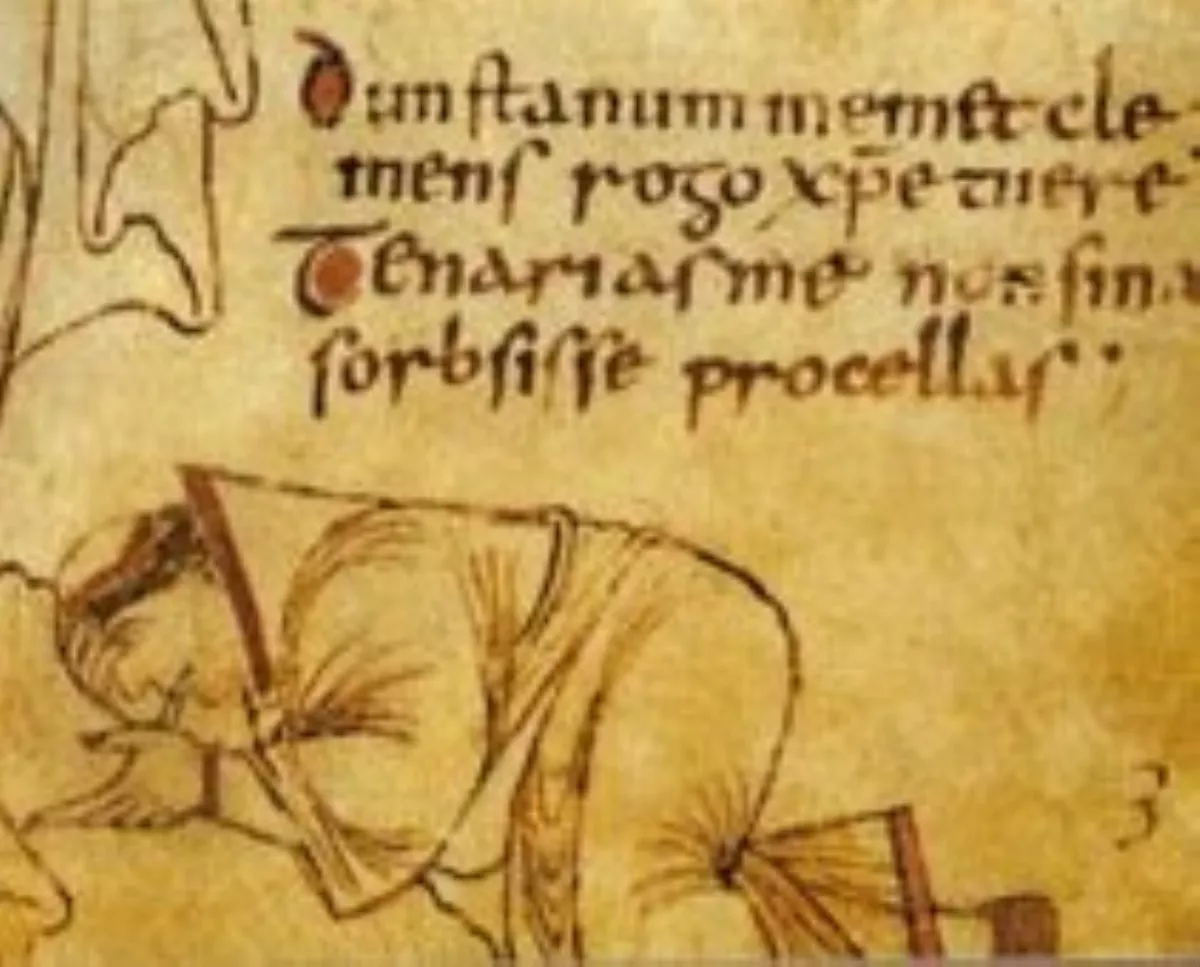 1.
1. Dunstan was successively Abbot of Glastonbury Abbey, Bishop of Worcester, Bishop of London and Archbishop of Canterbury, later canonised.

 1.
1. Dunstan was successively Abbot of Glastonbury Abbey, Bishop of Worcester, Bishop of London and Archbishop of Canterbury, later canonised.
Dunstan's work restored monastic life in England and reformed the English Church.
Dunstan served as an important minister of state to several English kings.
Dunstan was the most popular saint in England for nearly two centuries, having gained fame for the many stories of his greatness, not least among which were those concerning his famed cunning in defeating the Devil.
Dunstan became so well known for his devotion to learning that he is said to have been summoned by Athelm to enter his service.
Dunstan soon became a favourite of the king and was the envy of other members of the court.
The king ordered him to leave the court and as Dunstan was leaving the palace his enemies physically attacked him, beat him severely, bound him, and threw him into a cesspool.
Dunstan managed to crawl out and make his way to the house of a friend.
The bishop tried to persuade him to become a monk, but Dunstan was doubtful whether he had a vocation to a celibate life.
Dunstan worked as a silversmith and in the scriptorium while he was living at Glastonbury.
Dunstan used this money later in life to foster and encourage a monastic revival in England.
About the same time, his father Heorstan died and Dunstan inherited his fortune as well.
Again, royal favour fostered jealousy among other courtiers and again Dunstan's enemies succeeded in their plots.
Dunstan implored the envoys to take him with them when they returned to their homes.
Dunstan became separated from his attendants and followed a stag at great speed in the direction of the Cheddar cliffs.
Eadmund endeavoured vainly to stop his horse; then, seeing death to be imminent, he remembered his harsh treatment of St Dunstan and promised to make amends if his life was spared.
Dunstan had to re-create monastic life and to rebuild the abbey.
For nine years Dunstan's influence was dominant, during which time he twice refused the office of bishop, affirming that he would not leave the king's side so long as the king lived and needed him.
Later realising that he had provoked the king, Dunstan saw that his life was in danger.
Dunstan fled England and crossed the channel to Flanders, where he found himself ignorant of the language and of the customs of the locals.
Dunstan went to Rome in 960, and received the pallium from Pope John XII.
Dunstan's steward complained, but Dunstan seems to have suggested that they trust in Jesus Christ.
The monks in his communities were taught to live in a spirit of self-sacrifice, and Dunstan actively enforced the law of celibacy whenever possible.
Dunstan forbade the practices of simony and ended the custom of clerics appointing relatives to offices under their jurisdiction.
In 973, Dunstan's statesmanship reached its zenith when he officiated at the coronation of King Edgar.
Edgar's reign, and implicitly his governing partnership with Dunstan, was praised by early chroniclers and historians who regarded it as a golden age.
At the second of them the floor of the hall where the Witan was sitting gave way, and all except Dunstan, who clung to a beam, fell into the room below; several men were killed.
Dunstan criticised the violent act whereby he became king and prophesied the misfortunes that were shortly to fall on the kingdom, but Dunstan's influence at court was ended.
Dunstan retired to Canterbury, to teach at the cathedral school.
In 986, Dunstan induced the king, by a donation of 100 pounds of silver, to stop his persecution of the See of Rochester.
Dunstan worked to improve the spiritual and temporal well-being of his people, to build and restore churches, to establish schools, to judge suits, to defend widows and orphans, to promote peace, and to enforce respect for purity.
Dunstan practised his crafts, made bells and organs and corrected the books in the cathedral library.
Dunstan encouraged and protected European scholars who came to England, and was active as a teacher of boys in the cathedral school.
That year at the Synod of Winchester, St Dunstan's feast was ordered to be kept solemnly throughout England.
The monks of Glastonbury used to claim that during the sack of Canterbury by the Danes in 1012, Dunstan's body had been carried for safety to their abbey.
Dunstan became patron saint of English goldsmiths and silversmiths because he worked as a silversmith making church plate.
The story goes that Dunstan was a great brewer and negotiated an agreement whereby the Devil could blast the blossom of local apple trees with frost, damaging the cider crop so that Dunstan's own beer would sell more readily.
Dunstan is recorded as having founded Stepney's church, in 952 AD.